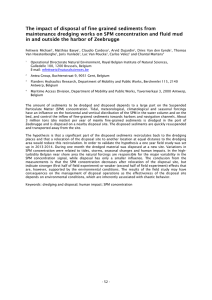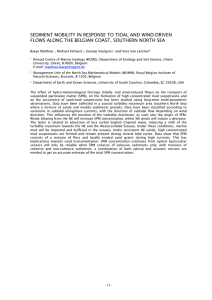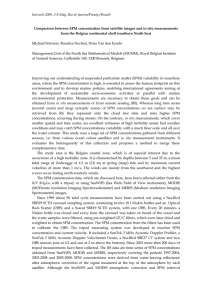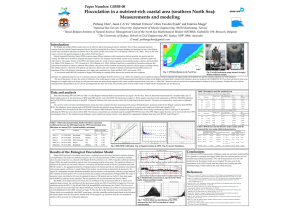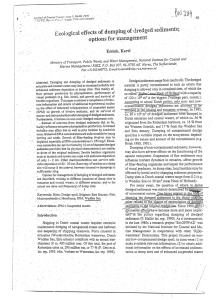SPM dynamics measured with an automated tripod in the Belgian
advertisement
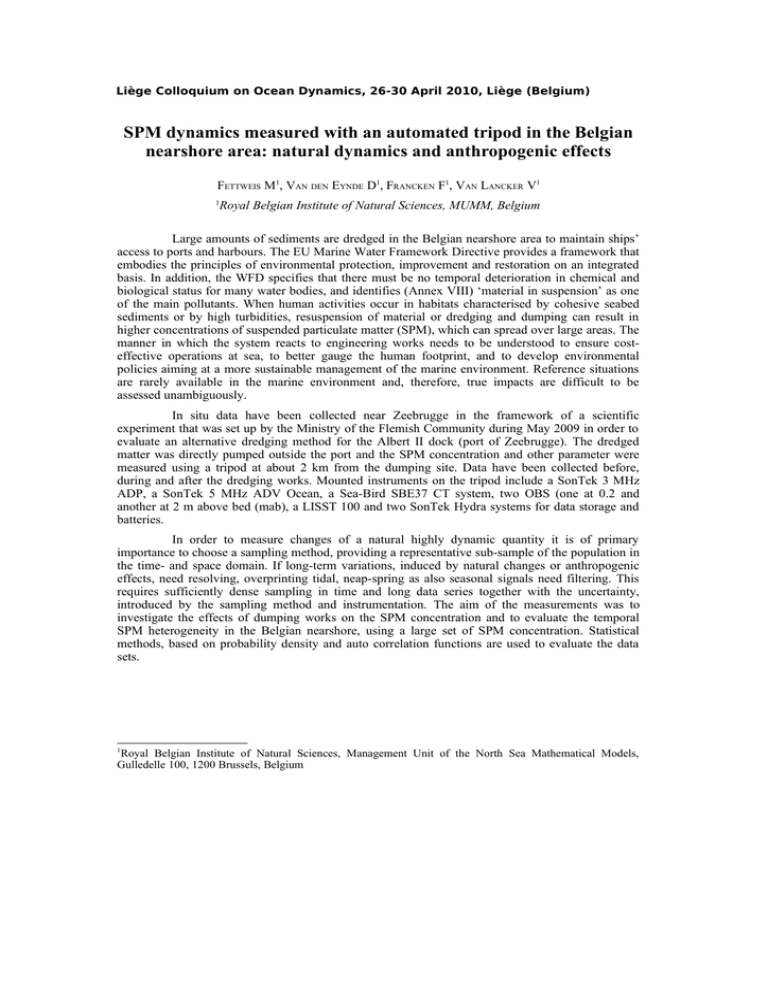
Liège Colloquium on Ocean Dynamics, 26-30 April 2010, Liège (Belgium) SPM dynamics measured with an automated tripod in the Belgian nearshore area: natural dynamics and anthropogenic effects FETTWEIS M1, VAN DEN EYNDE D1, FRANCKEN F1, VAN LANCKER V1 Royal Belgian Institute of Natural Sciences, MUMM, Belgium 1 Large amounts of sediments are dredged in the Belgian nearshore area to maintain ships’ access to ports and harbours. The EU Marine Water Framework Directive provides a framework that embodies the principles of environmental protection, improvement and restoration on an integrated basis. In addition, the WFD specifies that there must be no temporal deterioration in chemical and biological status for many water bodies, and identifies (Annex VIII) ‘material in suspension’ as one of the main pollutants. When human activities occur in habitats characterised by cohesive seabed sediments or by high turbidities, resuspension of material or dredging and dumping can result in higher concentrations of suspended particulate matter (SPM), which can spread over large areas. The manner in which the system reacts to engineering works needs to be understood to ensure costeffective operations at sea, to better gauge the human footprint, and to develop environmental policies aiming at a more sustainable management of the marine environment. Reference situations are rarely available in the marine environment and, therefore, true impacts are difficult to be assessed unambiguously. In situ data have been collected near Zeebrugge in the framework of a scientific experiment that was set up by the Ministry of the Flemish Community during May 2009 in order to evaluate an alternative dredging method for the Albert II dock (port of Zeebrugge). The dredged matter was directly pumped outside the port and the SPM concentration and other parameter were measured using a tripod at about 2 km from the dumping site. Data have been collected before, during and after the dredging works. Mounted instruments on the tripod include a SonTek 3 MHz ADP, a SonTek 5 MHz ADV Ocean, a Sea-Bird SBE37 CT system, two OBS (one at 0.2 and another at 2 m above bed (mab), a LISST 100 and two SonTek Hydra systems for data storage and batteries. In order to measure changes of a natural highly dynamic quantity it is of primary importance to choose a sampling method, providing a representative sub-sample of the population in the time- and space domain. If long-term variations, induced by natural changes or anthropogenic effects, need resolving, overprinting tidal, neap-spring as also seasonal signals need filtering. This requires sufficiently dense sampling in time and long data series together with the uncertainty, introduced by the sampling method and instrumentation. The aim of the measurements was to investigate the effects of dumping works on the SPM concentration and to evaluate the temporal SPM heterogeneity in the Belgian nearshore, using a large set of SPM concentration. Statistical methods, based on probability density and auto correlation functions are used to evaluate the data sets. 1 Royal Belgian Institute of Natural Sciences, Management Unit of the North Sea Mathematical Models, Gulledelle 100, 1200 Brussels, Belgium




